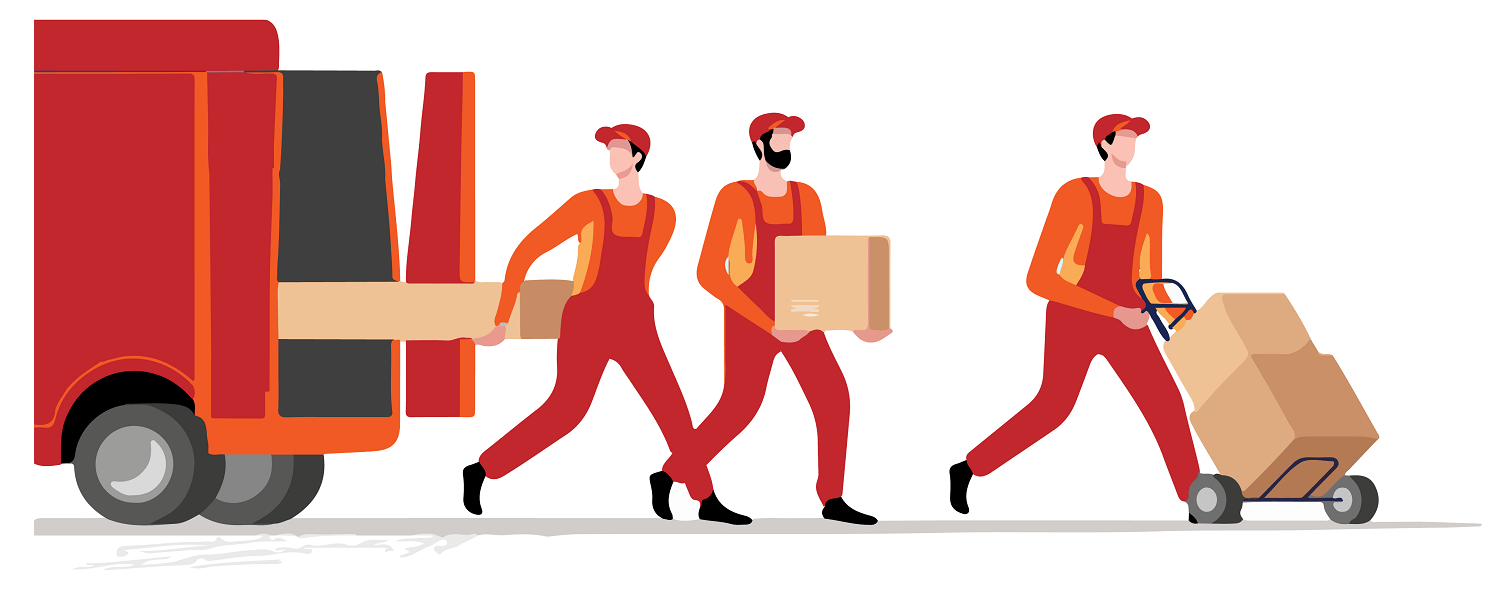Commercial Movers: The Benefits of Employing Full Service Movers
Professional Movers: Expert Moving Specialists Can Help Make Your Transition Smooth And Worry-free
History and Advancement of Moving Services
The Dawn of Moving: From Muscle to Devices
Picture this: a handful of strong men hauling heavy trunks on wood carts, navigating cobblestone streets with sweat and determination. Before the contemporary moving market took shape, moving was a brutal, labor-intensive task. In ancient times, moving frequently suggested depending on sheer physical strength and simple tools. The absence of specialized services meant households and merchants had to collaborate every detail themselves, typically running the risk of damage or loss.
However isn't it remarkable how requirement fuels innovation? As cities broadened and commerce grew, the requirement for effective, reliable moving options ended up being glaringly obvious. Enter the age of horse-drawn wagons and later on, motorized vehicles, which transformed how possessions traveled from one location to another.
Industrial Revolution: The Driver for Change
The 19th century's industrial boom improved numerous facets of life, including how people moved. Unexpectedly, metropolitan migration surged, and with it, the demand for expert movers skyrocketed. No longer was moving a basic task; it evolved into a specialized service offering:
- Packaging proficiency to secure vulnerable products
- Organized packing methods maximizing area
- Transport services customized to different distances
This duration marked the birth of companies devoted solely to moving, preparing for today's complex logistics and customer-centric methods.
Technological Advancements and Their Effect
Can you envision moving without contemporary equipment? The development of hydraulic lifts, forklifts, and pallet jacks transformed the industry overnight. All of a sudden, movers might manage bulky furnishings and heavy appliances with ease, decreasing injuries and enhancing performance.
The combination of digital innovation stimulated a new wave of innovation. GPS tracking, online reservation platforms, and real-time inventory management have actually ended up being staples in the moving services landscape. These tools not just improve openness but likewise empower clients to remain linked and informed throughout their moving journey.
Secret Milestones in Moving Services Advancement
| Period | Development | Significance |
|---|---|---|
| Ancient Times | Manual work and standard carts | Foundation of moving as a requirement |
| 19th Century | Horse-drawn wagons and packing services | Birth of professional moving companies |
| 20th Century | Motorized trucks and mechanized devices | Increased effectiveness and scale |
| 21st Century | Digital combination and GPS technology | Improved customer experience and logistics |
Reflections on the Journey
Reflecting on the advancement of movers, one might wonder: how did a basic act of carrying possessions end up being an advanced market? It's a tale of strength, adaptation, and continuous improvement. From the sweat-soaked streets of old check here to the precision-driven operations of today, the history of moving services is as vibrant as the people who rely on them.
Next time you pack a box or employ a mover, think about the layers of history embedded in every action. The journey of movers encapsulates human ingenuity, transforming what was once a difficult job into a seamless experience.
Checking out the Spectrum of Moving Services
When the time concerns shift your life from one address to another, the series of moving services readily available can feel like browsing a maze. Do you require a simple loading and dumping crew, or does your relocation demand the skill of complete packaging and unpacking? Understanding the subtleties can save hours of frustration and unexpected costs.
Typical Kinds Of Moving Services
- Local Relocations: Developed for movings within a city or city, these services typically run on a per hour basis, perfect for brief distances.
- Long-Distance Moves: Covering moves beyond 100 miles, these need more coordination, from logistical planning to protect transport, frequently priced by weight and range.
- Full-Service Moves: Movers handle everything-- packaging, loading, carrying, dumping, and in some cases even unpacking. Suitable for those pressed for time or energy.
- Self-Service Relocations: You load and load your personal belongings, while the company manages transportation and unloading. A middle ground offering cost savings and some benefit.
- Specialty Moves: For delicate, bulky, or valuable items like pianos, antiques, or artwork, needing customized equipment and competence.
Professional Tips to Browse Your Moving Service Choices
- Prioritize Versatility: Choose a service that adjusts to unanticipated delays or last-minute modifications-- stiff schedules can turn a smooth move into a logistical problem.
- Examine Insurance Options: Not all moving companies offer the very same level of protection. Comprehending your protection can prevent distress if something goes awry.
- Demand Detailed Stocks: A precise product list prevents conflicts and guarantees responsibility, specifically when handling long-distance or specialized relocations.
- Consider Time of Year: Seasonal demand can impact schedule and prices. Early booking during off-peak seasons might give much better service and versatility.
- Ask About Packaging Products: Premium boxes, bubble wrap, and padding can be the difference between a scratched treasure and a pristine arrival.
Table: Service Characteristic Compared
| Service Type | Who Loads? | Transportation Mode | Typical Prices Design | Suitable For |
|---|---|---|---|---|
| Local Move | Consumer or Movers | Truck | Per hour | Short ranges, small loads |
| Long-Distance Move | Movers | Truck or Container | Weight & & Range | Cross-state or local relocation |
| Full-Service Move | Movers | Truck | Flat or Weight-Based | Time-sensitive, high-stress relocations |
| Self-Service Move | Customer | Truck or Container | Flat or Hourly | Cost-conscious, hands-on movers |
| Specialized Move | Movers with expertise | Specialized Equipment | Custom-made Quote | Vulnerable or valuable products |
The Unseen Complexity Behind Each Option
Have you ever questioned why moving seems uncomplicated on tv but becomes a waterfall of last-minute decisions in reality? The truth lies in the intricacies of each service type. For example, full-service relocations might look like a high-end, however the know-how associated with packaging delicate treasures or dismantling bulky furnishings is a craft developed over years. On the other hand, selecting a self-service move might save money, but it requires an eager understanding of how to load effectively-- did you know that stacking oddly shaped boxes incorrectly can trigger internal shifting during transit, damaging vulnerable contents?
Choosing the ideal kind of moving service is not almost convenience-- it has to do with protecting your memories and investments. What's your move's story going to be?

Packaging and Moving Techniques
Ever attempted to fit a suitcase that simply won't close? That's the type of puzzle expert movers solve daily-- however on a much larger scale. The secret lies not in brute force however in tactical positioning and smart use of area. Packing isn't simply about stuffing items into boxes; it's an art kind where every inch counts.
Layering for Success
Imagine a painter layering colors to develop depth. When packing, begin with much heavier items at the bottom, then cushion with softer products like bubble wrap or towels. This avoids damage and optimizes box stability. Strangely formed items can slip into gaps, minimizing squandered area.
- Wrap fragile products separately with tissue or foam to avoid scratches.
- Usage clothes as cushioning-- it's both efficient and eco-friendly.
- Fill empty areas with packing peanuts or crumpled paper to decrease motion.
Labeling: The Unsung Hero

What excellent is best packing if you spend hours searching through boxes? In-depth labeling is a game-changer. Rather of vague tags like "Kitchen," try this approach:
| Label | Description | Priority |
|---|---|---|
| Vulnerable - Glass wares | Handle with care, consists of fragile products | High |
| Fundamentals - Opening Night | Items needed instantly after moving | Urgent |
| Books - Research Study Space | Stacked, heavy books | Medium |
Strategic Packaging Tips
- Take apart large furnishings and keep screws in identified bags taped to the pieces.
- Usage uniform box sizes when possible-- stacking becomes easier and much safer.
- Don't overpack boxes; weight limitations exist for a reason. Go for 40-50 pounds max.
- Wrap furnishings edges with moving blankets to prevent scratches throughout transit.
- Seal boxes with premium packing tape-- double layers on the bottom are vital.
Why do some movers swear by a color-coded system? Since it removes uncertainty on moving day. Assign each room a color and mark boxes appropriately. This little action can save hours when discharging and unloading.
Packaging and moving need precision-- like a chess video game where every relocation counts. Have you ever discovered how some movers handle bulky products effortlessly? They utilize angles and pivot indicate navigate tight corners without damage. It's not muscle; it's technique.
Hidden Battles Behind the Moving Van Doors
Ever viewed a team of professional movers carry a grand piano through a narrow doorway and wondered how they pull it off without a scratch? The art of moving isn't just muscle and trucks; it's a fragile dance with unpredictability. Weather condition can flip from a sunlit true blessing to a torrential threat in minutes, turning a simple drive into a logistical maze.
One infamous hurdle is the labyrinthine design of some homes or apartments. Staircases too tight for dollies, doorways narrower than basic boxes, or elevators that hardly fit a couch-- these physical peculiarities demand innovative options on the spot. Movers often turn to unconventional methods like dismantling furniture or utilizing tailor-made padding to protect both the item and the home.
Precision Packing: More Than Simply Covering
It's tempting to believe packing is simply stuffing boxes, but the truth is a complex puzzle of weight circulation and fragility. Movers need to prepare for how products will shift during transit-- a miscalculation can suggest shattered treasures or dented devices. The trump card? Strategic layering and using materials with specific shock-absorbing qualities.
- Bubble wrap is basic, but alternating it with foam sheets can drastically decrease effect damage.
- Heavy items go at the bottom; delicate ones nestle on top, cushioned by soft textiles.
- Labeling boxes not simply by contents however by handling instructions ensures quicker, much safer discharging.
Another less spoke about pressure is the psychological toll. The clock ticks non-stop, and every hold-up ripples through tight schedules. Remaining calm in the middle of chaotic last-minute changes requires imagination and team synergy.
Traffic Jams and Timing: The Undetectable Opponents
| Challenge | Expert Method | Effect |
|---|---|---|
| Urban blockage | Path optimization apps and versatile scheduling | Minimizes hold-ups and fuel consumption |
| Parking restrictions | Pre-arranged authorizations or strategic parking nearby | Prevents fines and time loss |
| Unforeseeable weather condition | Water resistant coverings and contingency strategies | Preserves the condition of products and equipment |
Do you truly know what it takes to keep a moving day on track? It's not just about strength or endurance; it's about foresight, flexibility, and a deep understanding of every piece of the puzzle. The next time you see movers at work, remember: behind that seamless operation lies a series of computed maneuvers and fast thinking that few ever notice.